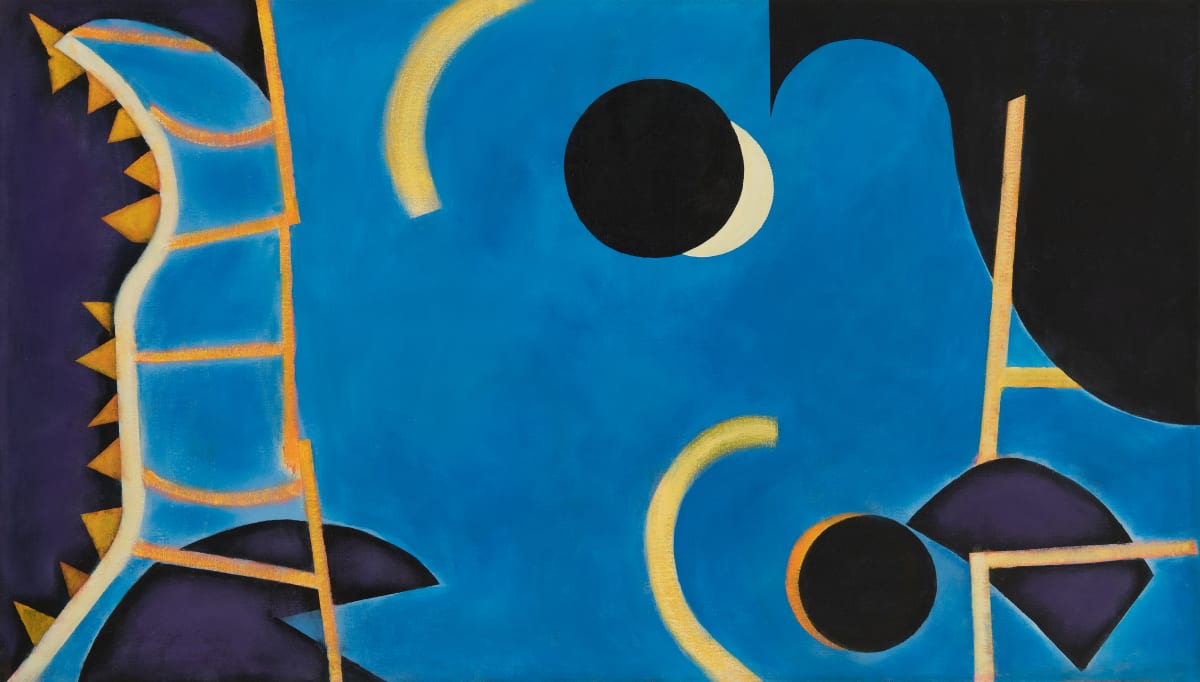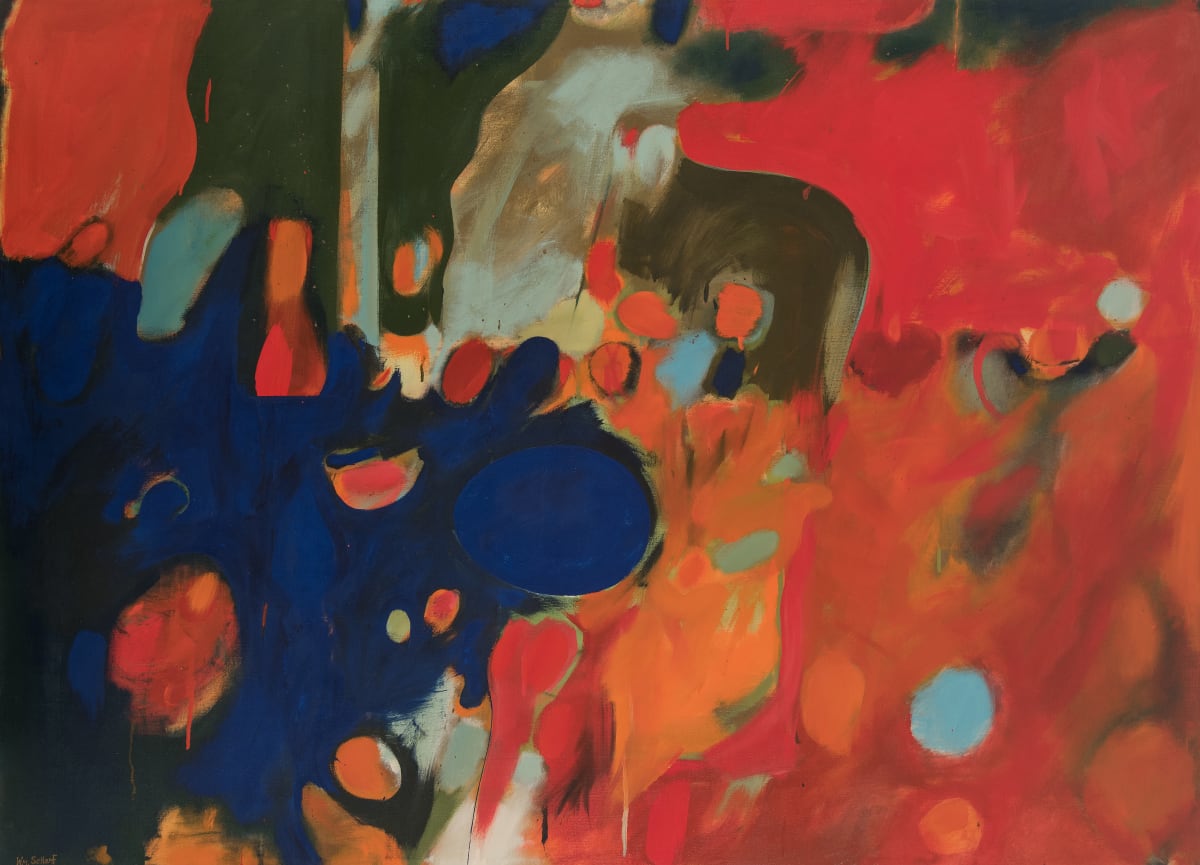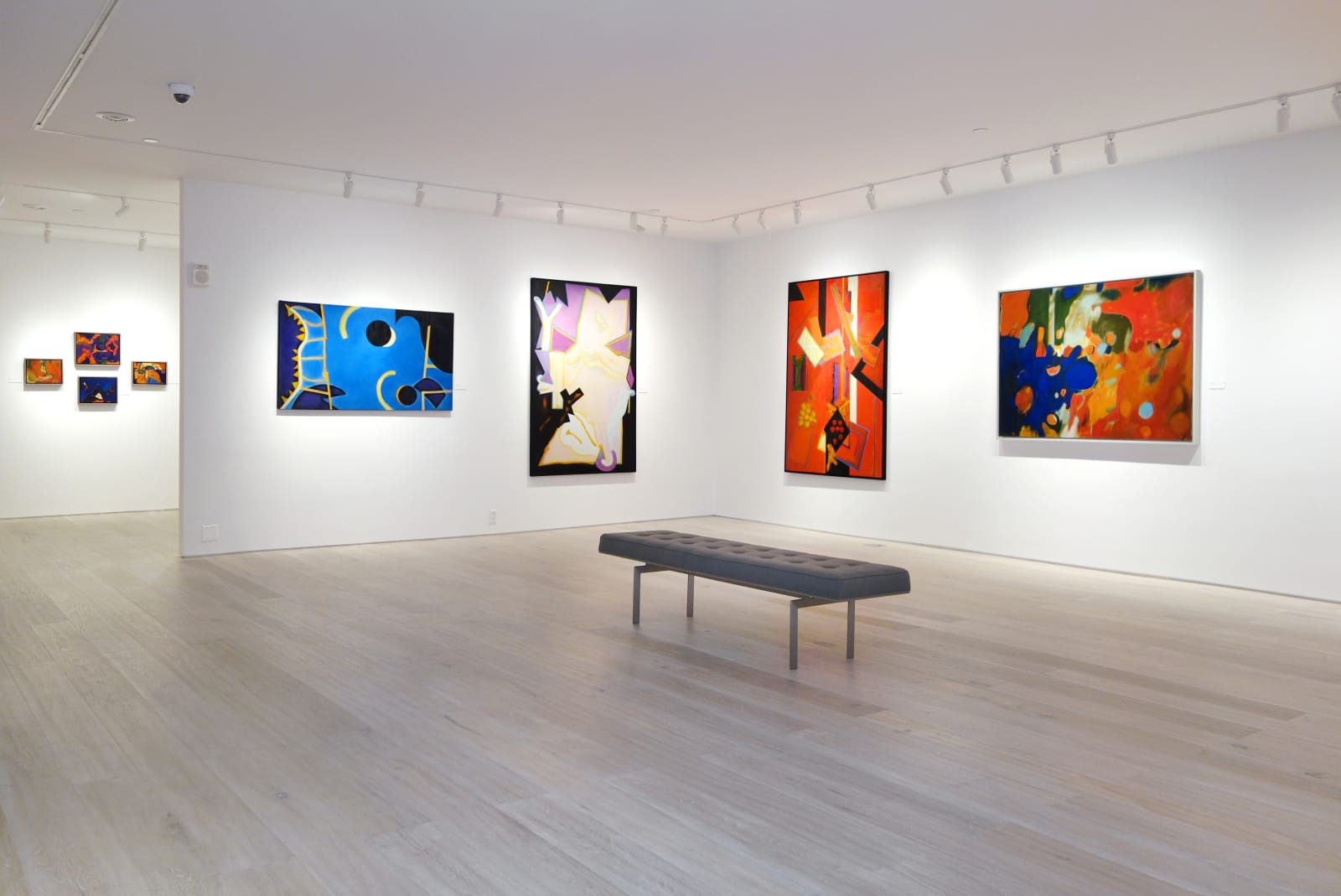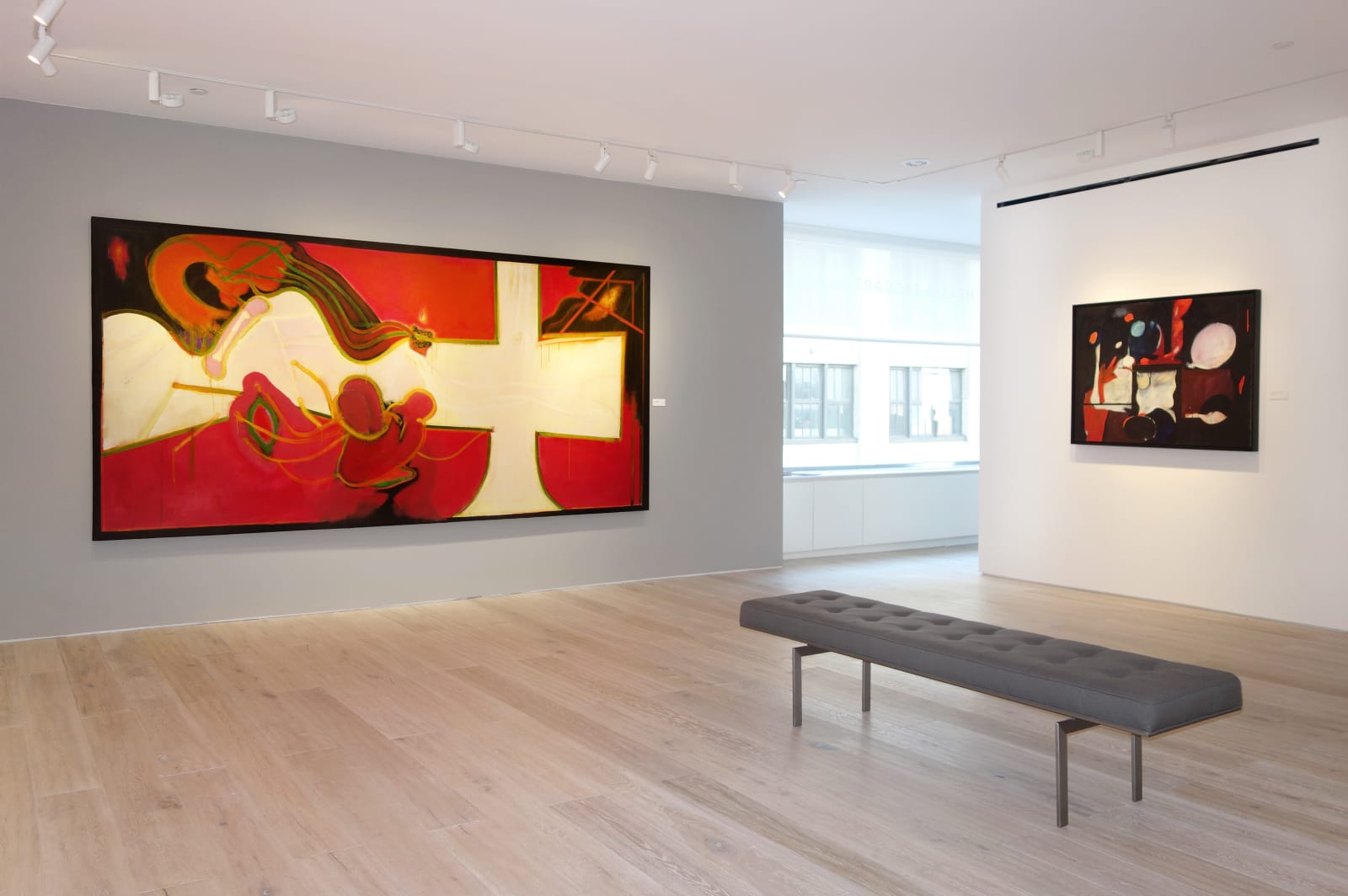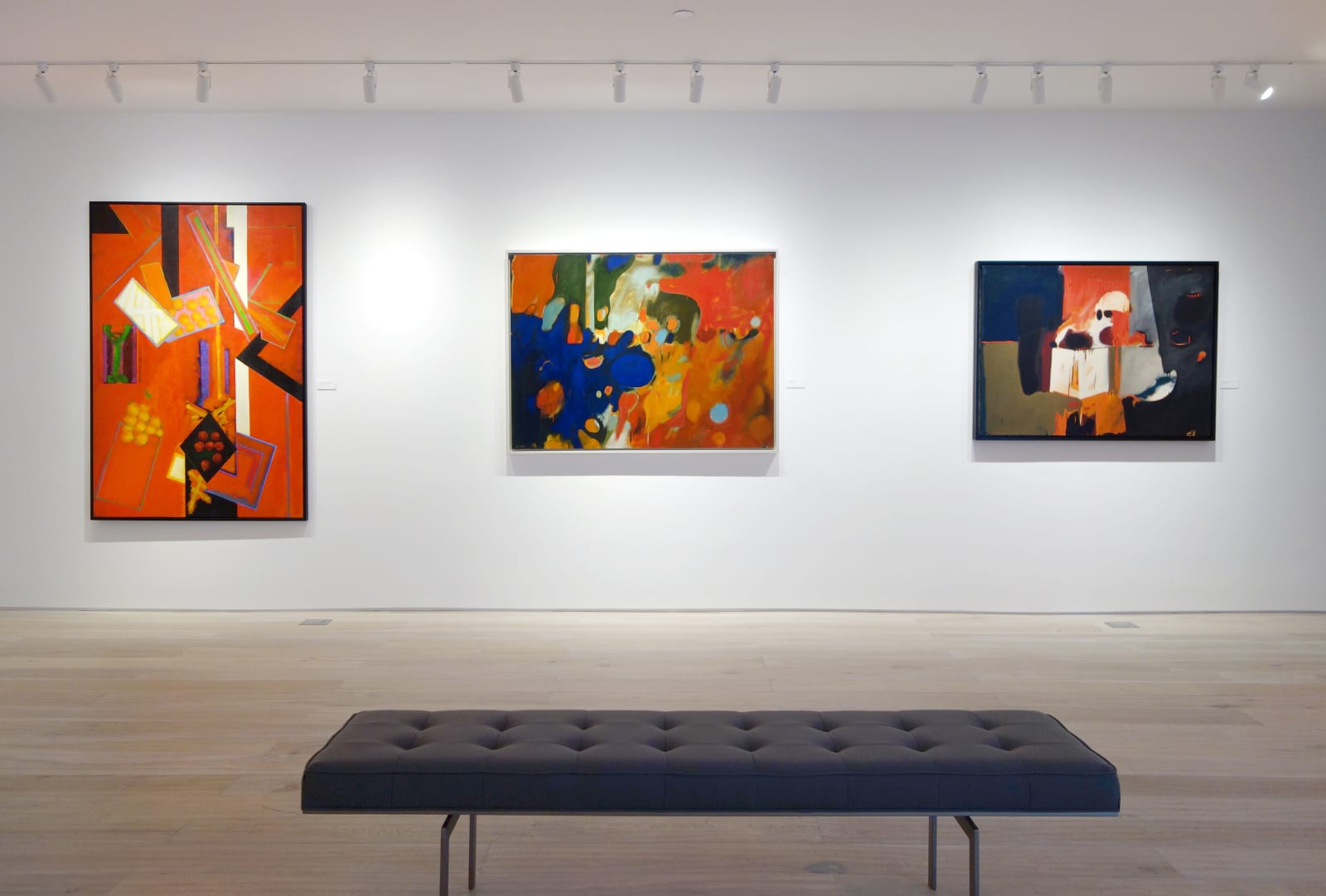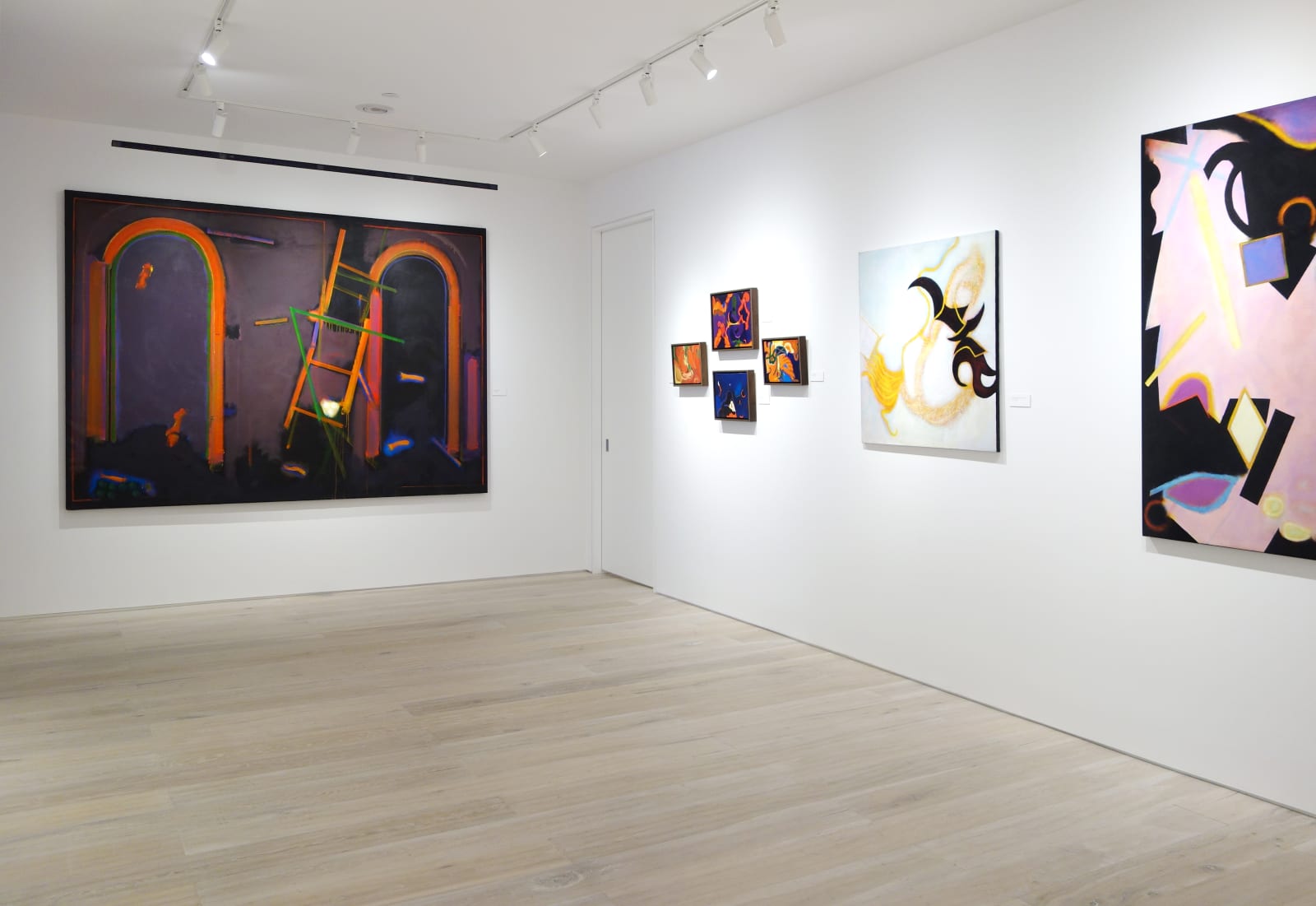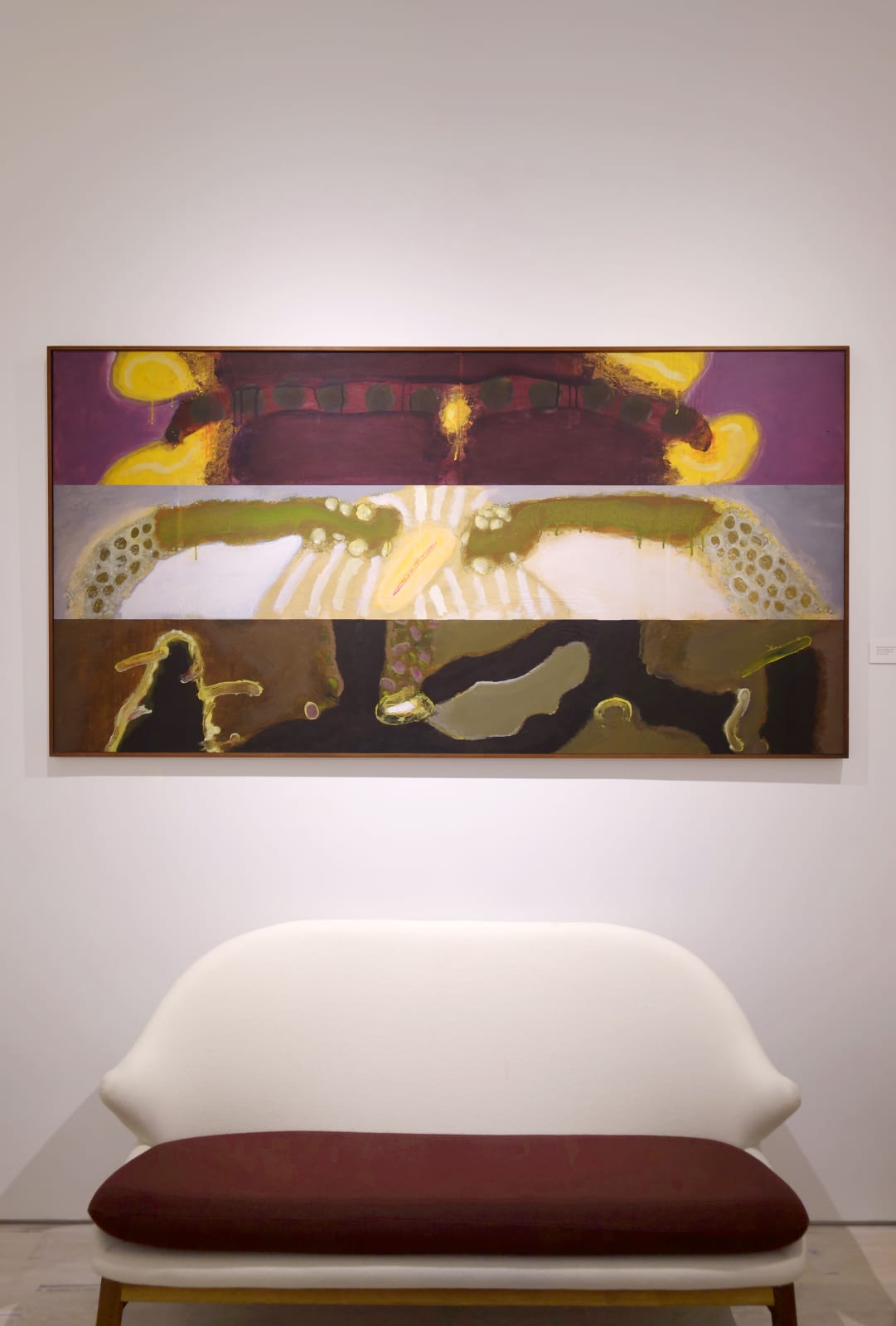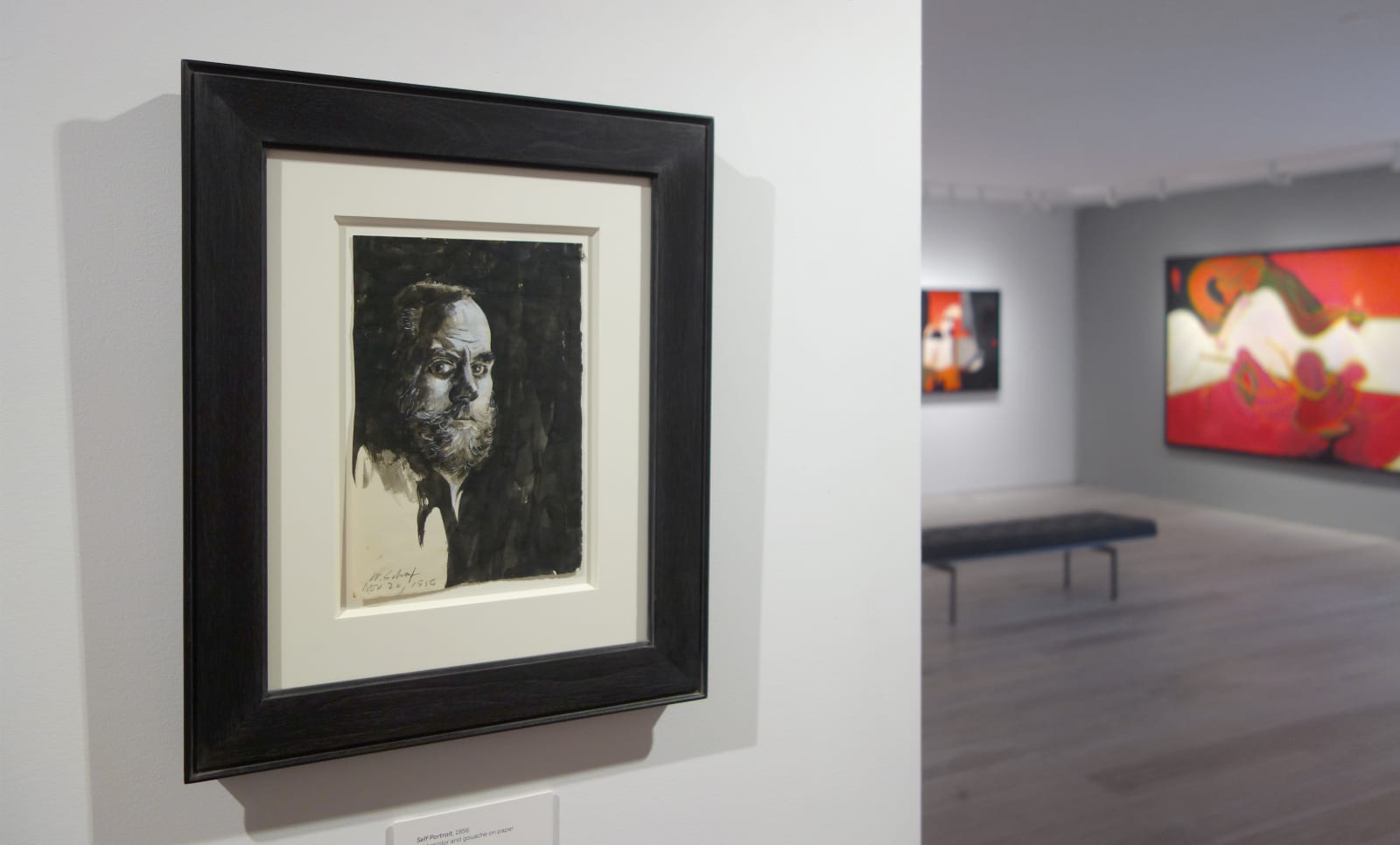
this exhibition reveals the genius of a man whose oeuvre is too little known.
Hollis Taggart Galleries is pleased to present William Scharf: Imagining the Actual, a retrospective exhibition of the work of visionary painter William Scharf. Selected in collaboration with the artist’s close friends and family, this exhibition reveals the genius of a man whose oeuvre is too little known. Though often grouped with the Abstract Expressionists, the sixty-five works on display will demonstrate how Scharf’s art springs not from collective philosophy, but rather from a very unique artistic vision, one that has fueled Scharf’s oeuvre over a career that spans more than six decades.
The individuality of Scharf’s oeuvre resists art historical categorization. His abstracted compositions of organic and geometric formal elements recall the free associations of Surrealism and the all-over grandeur of Abstract Expressionism, and at the same time embody a very individual and immediately recognizable pictorial sense. Scharf combines virtuoso paint handling, vibrant color, and rich symbolic language in canvases that engage the viewer in a transcendent and emotional dialogue. This dialogue is accomplished in part through recurring symbols, which allude to hidden, mysterious narratives. Scharf plumbs the psychological wells of collective myths for symbolic content: the crown of thorns, the ladder, the fish, and the cross can be found throughout, functioning not, as one might expect, as religious symbols, but rather as a means through which to access a deeper, symbolic level of visual communication.
Hollis Taggart Galleries is pleased to present William Scharf: Imagining the Actual, a retrospective exhibition of the work of visionary painter William Scharf. Selected in collaboration with the artist’s close friends and family, this exhibition reveals the genius of a man whose oeuvre is too little known. Though often grouped with the Abstract Expressionists, the sixty-five works on display will demonstrate how Scharf’s art springs not from collective philosophy, but rather from a very unique artistic vision, one that has fueled Scharf’s oeuvre over a career that spans more than six decades.
The individuality of Scharf’s oeuvre resists art historical categorization. His abstracted compositions of organic and geometric formal elements recall the free associations of Surrealism and the all-over grandeur of Abstract Expressionism, and at the same time embody a very individual and immediately recognizable pictorial sense. Scharf combines virtuoso paint handling, vibrant color, and rich symbolic language in canvases that engage the viewer in a transcendent and emotional dialogue. This dialogue is accomplished in part through recurring symbols, which allude to hidden, mysterious narratives. Scharf plumbs the psychological wells of collective myths for symbolic content: the crown of thorns, the ladder, the fish, and the cross can be found throughout, functioning not, as one might expect, as religious symbols, but rather as a means through which to access a deeper, symbolic level of visual communication.
Born in 1927 in Media, Pennsylvania, Scharf received a formal art training in Philadelphia before moving to New York in 1952, where he has lived and worked ever since. Though he maintained many art-world friendships, most notably a close relationship with Mark Rothko, Scharf’s paintings function on a more personal, mystical level than those of many of his contemporaries. This exhibition turns a retrospective eye on this powerful body of work, following his evolution from midcentury into the new millennium with works that range from diminutive paintings to wall-covering canvases. Throughout, one finds that Scharf’s bold, evocative compositions offer glimpses into a unique artistic mind.
William Scharf: Imagining the Actual is accompanied by a fully illustrated catalogue with an insightful essay by Christopher Rothko, whose longstanding friendship with the Scharf family allows a singular perspective on the artist’s work. Rothko is a graduate of Yale University and practiced clinical psychology before devoting himself full-time to managing the legacy of his father, Mark Rothko. He most recently published Mark Rothko: From the Inside Out, a collection of eighteen essays responding to his father’s work.









